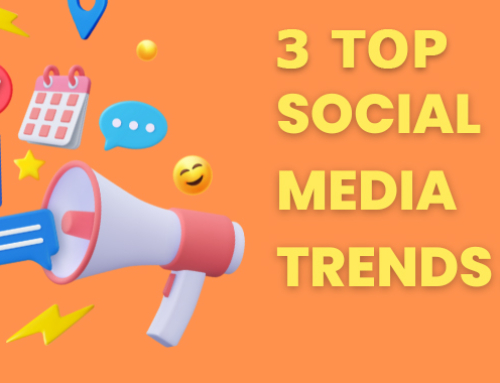We exist in a world of digital living; an age of online friendships and followers. If we want to find recipes, we hop onto Pinterest; if we’re looking for professional connections, we head to LinkedIn; and so on.
The best thing about all these options is that they’ve already been vetted by other people. We’re far more likely to trust a Facebook friend who recommends a product than a description on the product’s website itself.
So, while we can Google ‘blue suede shoes’ and receive an ad from a heap of shoe stores, it’s unlikely we’ll proceed with a purchase before doing some research on the various brands. First, we might check them out on Facebook and read some reviews; then we might check Twitter and Instagram for discounts. What we want to be sure of is that we’re not going to get ripped off.
That’s why it’s so important that brands recognise this process and make every effort to use these social media channels to develop a relationship with their customers.
That being said, of course, it takes a lot of time and effort in order for your brand to be constantly engaging, posting and sharing on social media – and who really has time for that? So yes, while most social media channels are free to use, if they’re sucking up your time, then they can actually be cutting into your bottom line.
To prevent that happening, we’ve put together a list of 12 tips to help you save time (and money) while you engage with and grow your social media following.
1. Create a social media strategy and plan
 Having a strategy will help you bridge the gap between where you are on social media and where you want to be. This is not nearly as scary or complicated as it might sound. All you are really trying to do is to align your social media goals with your overall business goals.
Having a strategy will help you bridge the gap between where you are on social media and where you want to be. This is not nearly as scary or complicated as it might sound. All you are really trying to do is to align your social media goals with your overall business goals.
Your strategy will establish who you’re trying to reach and what you want to accomplish. Your plan will serve as a guide for your marketing efforts and help you avoid ineffective, time-wasting tactics.
So, to establish your social media goals and determine how you will achieve them – and how you will measure your success – think of and answer questions such as: Who do you want to reach? How are you going to get to them? What social media tactics will best fit your goals? What do you want your audience to know about your brand? How are you going to convert them into customers? How are you going to help them talk about your brand to others?
2. Audit your current social media activity
 Do an audit of what you’re currently doing on social media – that means taking a long, hard and objective look at what you’re doing – be honest about what’s working or not working. Create a spreadsheet of all the social media channels you’re using and what you’re doing on them.
Do an audit of what you’re currently doing on social media – that means taking a long, hard and objective look at what you’re doing – be honest about what’s working or not working. Create a spreadsheet of all the social media channels you’re using and what you’re doing on them.
Evaluate the needs of your various social media networks and create a ‘mission statement’ for each of them – for example, if you have a LinkedIn profile, you might decide to use it to share stuff about your company’s culture and achievements.
Make sure all your social media networks are up to date and on brand. So, while you might use the various networks for different purposes, they all still look and feel like they belong to one company.
3. Use social media analytics
How do you know how many people are seeing your posts and engaging if you don’t look at the numbers? You need to make decisions about your use of social media based on data.
Analyzing data is crucial for prioritizing your social media profiles and the type of content. Set regular times for analysis of your social media marketing results – weekly and monthly reports will give you the best perspective. Using an automated social media monitoring and measurement service will give you detailed measurement data on viewership, engagement, lead generation and much more.
4. Create a content calendar
Create a spreadsheet of all your campaigns and projects to help you plan and schedule (by date and time) the content you want to share. Specify which social media network you’ll use to promote various aspects of the content in each campaign or project. Include all the social media messaging you’ll be using to promote your content.
A schedule like this will help you solve some of the biggest issues that social media users have to deal with, such as, continuing to post badly-performing content, ignoring certain social media networks while overwhelming others, and missing important dates or events.
5. Set up a publication schedule
 You do not have to add a new post to every social network every day. Doing so can eat up a lot of time and leave you feeling overwhelmed. The important thing is that when you do post, make sure it’s valuable content that will generate a good response from your followers.
You do not have to add a new post to every social network every day. Doing so can eat up a lot of time and leave you feeling overwhelmed. The important thing is that when you do post, make sure it’s valuable content that will generate a good response from your followers.
Use your social media analytics to find out what time of the day/week you get more interaction from your target audience. For example, if you know that the majority of them are only online in the evenings, then make sure you are posting in that window.
When you start to get a feel for what your followers want and when, you’ll have a clearer picture of when you should be concentrating on social media.
6. Create a content stockpile
As a part of your social media schedule, make a time each week or two to sit down and brainstorm content ideas for blog posts, status updates, tweets, etc. This will prevent the stress of having to come up with something on the spot later. Then, when the time comes to update your posts, you can just select something relevant from the stockpile.
7. Focus on quality
While it’s good to have a constant flow of content and announcements, it’s actually better to have nothing than to have abysmal posts with incorrect information. Make sure you are sharing content that is good enough for others to want to re-share. Aim for content that will last, not just trend for a week and disappear. If you are able to produce content or develop insights that will stay relevant in your industry, then you’ll have struck gold.
8. Set up topic alerts
Social media is all about what is going on right NOW. So, stay aware of demand by keeping your eye on topics trending in your industry. To save yourself time from searching for industry news, set up a Google Alert for specific topics that relate to your business. Then chime in when you find something of interest and share it with your followers. This will increase your engagement rate and potentially gather more followers.
9. Get automated
No one expects you to manage your social media accounts so intensely that you’re manually posting dozens of times per day. One bonus of having a content stockpile is that you can use tools like Buffer and Hootsuite to automatically schedule the future release of posts.
This doesn’t mean you can put all of your social media posts on auto-pilot though, because that defeats the purpose of being in the ‘now’ that social media is all about. So, while you can schedule certain things, you still need to go back and make responses where needed and take time to actually interact with your followers.
10. Curate
Post content produced by others. Sharing content from others makes your social media channels more interesting and saves you time, while also delivering additional value to your audience. Although the ideal mix varies, the important point is your social networks should not carry your own content exclusively.
11. Republish content
Reposting a small percentage, say around 10%, of your content will not annoy your followers. Most probably did not even see your initial post and few will see it twice even if you repost it multiple times. However, only repost your best content – and do so at different times of the day.
12. Use your social networks for customer service
 Many small businesses can easily take advantage of social media as a way to provide better customer service. For example, you can quickly and easily respond to any issues or comments that customers leave on your social networks, rather than having to wade through emails or have customers waiting to speak to someone on the phone.
Many small businesses can easily take advantage of social media as a way to provide better customer service. For example, you can quickly and easily respond to any issues or comments that customers leave on your social networks, rather than having to wade through emails or have customers waiting to speak to someone on the phone.
Remember, anything you can do on your social media networks that benefits your customers will also give you a greater return on your investment in social media.
Help is just a phone call away
Would you like help with implementing the above tips or further optimizing your social media channels to increase engagement? Net Branding is a leading social media marketing agency. Our Auckland-based team understands social media and how to use it to grow your business, and we’re just a phone call away.






